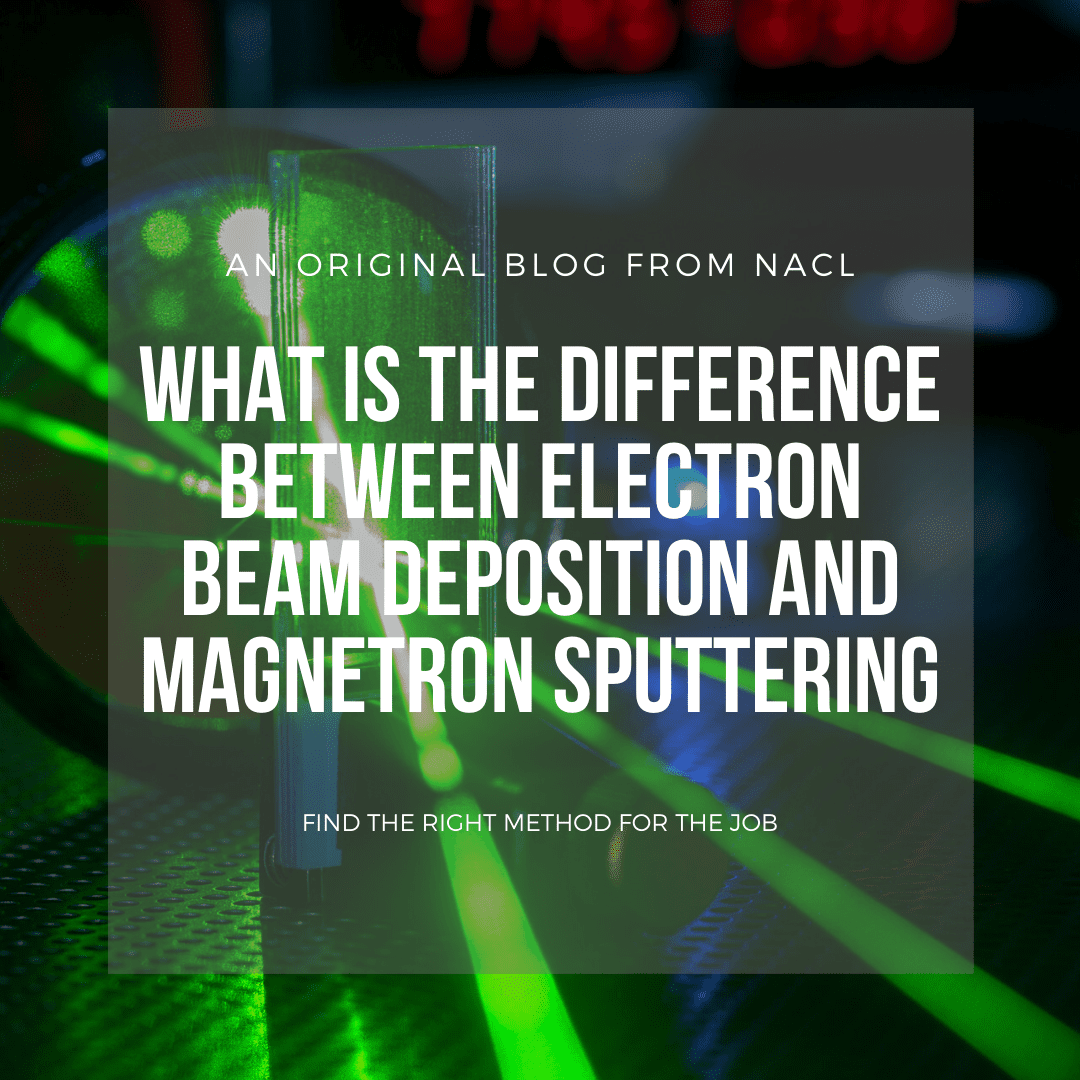What’s the difference between electron beam deposition and magnetron sputtering?
A regular question we get here at NACL is “What is the difference between electron beam and Magnetron Sputter deposition?” Both processes have their advantages and disadvantages depending on the coating type, substrate material, application, and test requirements (both mechanical and optical). This quick post should help outline the technologies and help you make an educated decision in which process is most beneficial for your program.
Electron Beam Vacuum Deposition (E-Beam)
When utilizing an electron beam deposition process (E-Beam), source materials in a coating chamber are either vaporized using heating or electron-beam bombardment of powder or granular substances. The subsequent vapor condenses upon the optical surfaces, and via precision computer control of heating, vacuum levels, substrate location, and rotation during the deposition process result in conformal optical coatings of pre-specified optical thicknesses. E-Beam coatings can be enhanced using an Ion Beam to assist the deposition procedure. In an ion assisted coating, an ion beam within the vacuum chamber is aimed at the substrates and the substrates are bombarded with this ion beam prior to deposition of the evaporative materials. The result of this bombardment is an increase in the adhesion energy of the material to the substrate which creates an optical coating with a denser and more robust bond that may also less stress.
E-Beam coatings are advantageous for polymeric coating due to its simplicity and flexibility. E-Beam coatings also process in a more rapid fashion in a batch scenario as compared to Magnetron Sputtered coatings which make them ideal for high volume commercial applications. An additional benefit of E-Beam coatings is a wider array of less expensive evaporative materials. Magnetron sputter targets are traditionally far more expensive than the evaporative materials used in the E-Beam process.
Magnetron Sputtering
Magnetron sputtering is a deposition technology involving a vapor/gas plasma which is produced and confined to the same space as the desired deposition material or the evaporative target. The surface of the target is bombarded by high-energy ions within the plasma, and the atoms which come free from the target bombardment process travel through the vacuum chamber in order to be deposited onto a substrate. When the loose atoms are deposited onto the desired substrate, they form a thin-film.
Magnetron sputtering is advantageous as it doesn’t require evaporation or melting of source materials, allowing for exotic material experimentation and novel coating film applications.
North American Coating Laboratories utilizes E-Beam coating technology as we have found it is perfectly tailored to our primary expertise which is applying high-performance optical coatings to polymeric optical elements at room temperature. Magnetron Sputter coating has many advantages, but our custom designed processes benefit greatly from the low energy, quick cycle times of the E-Beam coating process.
We’d love to chat more about your program and see if our coating solutions are a fit for your application. Connect with us so we can help you with your decision as to which process is most beneficial for your program.






